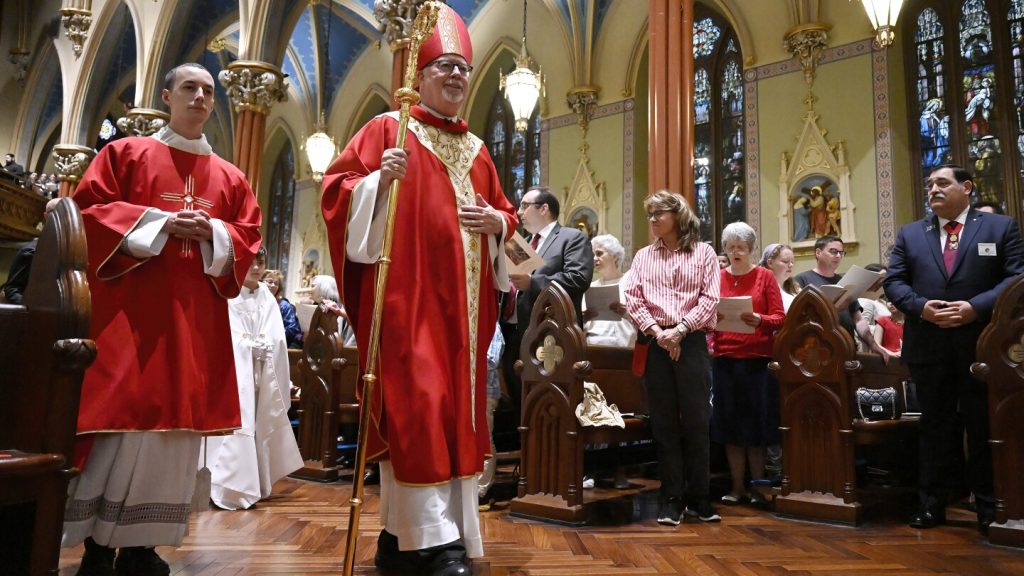A series of Catholic pilgrimages has begun across the United States, leading up to a major gathering in Indianapolis focused on Eucharistic rites and devotions. The National Eucharistic Pilgrimage has started with Masses and events in California, Connecticut, Minnesota, and Texas. These pilgrimages will involve walking along country roads and through city centers, with stops at parishes, shrines, and other sites. The pilgrimage is a revival of a historic Catholic tradition that aims to demonstrate faith and prayerful action for unity and peace.
Each procession is led by a priest holding a monstrance, which displays the consecrated host. The Catholic Church teaches that the Eucharist is the true presence of Jesus in the form of bread and wine, making it an object of devotion. The National Eucharistic Congress, the organization behind the events, emphasizes that walking with Jesus is a witness to faith and a prayerful action for unity and peace. The scale of the four lengthy pilgrimages appears to be unprecedented, with participants beginning their journeys from various points across the country.
The pilgrimage is part of an effort to revive a type of mass devotion that was once more common in past generations of Catholicism. The pilgrimages and the concluding National Eucharistic Congress in Indianapolis in July are being funded by private donors, sponsors, and ticket sales. The event is part of a three-year process that includes parish activities alongside the pilgrimages and congress. The revival of this tradition aims to bring back a sense of unity and peace, focusing on Christ rather than politics.
The idea for these pilgrimages came from discussions among U.S. bishops around the significance of the Eucharist in the life of the Church. The bishops’ document from 2021 addressed the importance of Catholics aligning with church teachings and the responsibility of bishops to respond to actions at variance with church law. Despite the decline in participation in devotional activities like Eucharistic adoration in the 20th century, the Eucharistic pilgrimage aims to attract participants who are interested in reviving older traditions within the Catholic Church.
The resurgence of interest in these pilgrimages raises questions about how well the initiative will resonate within the broader Catholic community. The historical context of stadium-sized devotional activities reveals a shift in attendance and interest over the years. The Eucharistic pilgrimage, however, seems to be drawing attention, particularly from Catholic media that support the revival of older traditions within the Church. The hope is that this series of pilgrimages and the National Eucharistic Congress will reignite a sense of faith, unity, and devotion among Catholics in the United States.


